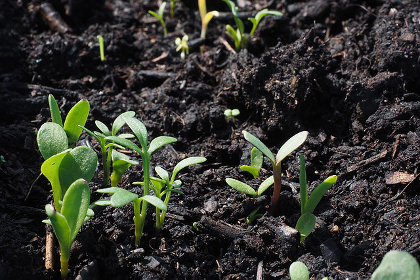
How the World’s Most Fertile Soil Can Help Reverse Climate Change
Feeding more than 7 billion people with minimal environmental and climate impacts is no small feat. That parts of the world are plagued by obesity while starvation is rampant elsewhere shows part of the problem revolves around distribution and social equity. But agricultural methods pose some of the biggest challenges.
Over the past half century, the world has moved increasingly to industrial agriculture—attempting to maximize efficiency through massive, often inhumane livestock operations; turning huge swaths of land over to monocrops requiring liberal use of fertilizers, pesticides and genetic modification; and reliance on fossil fuel-consuming machinery and underpaid migrant workers. This has contributed to increased greenhouse gas emissions; loss of forests and wetlands that prevent climate change by storing carbon; pollution from runoff and pesticides; antibiotic and pesticide resistance; reduced biodiversity; and soil degradation, erosion and loss.
July 6, 2016 | Source: EcoWatch | by Dr. David Suzuki
Feeding more than 7 billion people with minimal environmental and climate impacts is no small feat. That parts of the world are plagued by obesity while starvation is rampant elsewhere shows part of the problem revolves around distribution and social equity. But agricultural methods pose some of the biggest challenges.
Over the past half century, the world has moved increasingly to industrial agriculture—attempting to maximize efficiency through massive, often inhumane livestock operations; turning huge swaths of land over to monocrops requiring liberal use of fertilizers, pesticides and genetic modification; and reliance on fossil fuel-consuming machinery and underpaid migrant workers. This has contributed to increased greenhouse gas emissions; loss of forests and wetlands that prevent climate change by storing carbon; pollution from runoff and pesticides; antibiotic and pesticide resistance; reduced biodiversity; and soil degradation, erosion and loss.
The “solution” offered by many experts is to double down on industrial agriculture and genetic modification. But doing so ignores how natural systems function and interact and assumes we can do better. History shows such hubris often leads to unexpected negative results. Others are attempting to understand how to work within nature’s systems, using agroecological methods.
One promising development is the renewed interest in a soil-building method from the distant past called “dark earth” or “terra preta,” which involves mixing biochar with organic materials to create humus-rich soil that stores large amounts of carbon. In the book Terra Preta: How the World’s Most Fertile Soil Can Help Reverse Climate Change and Reduce World Hunger, Ute Scheub and co-authors claim increasing the humus content of soils worldwide by 10 percent within the next 50 years could reduce atmospheric CO2 concentrations to pre-industrial levels.
Dark earth’s benefit to climate is just one of its many exciting possibilities. It also enhances soils so they produce higher yields, helps retain water and prevents erosion. It’s more alive with biodiverse micro-organisms, making it easier for crops to adapt to changing conditions. And it’s a good way to recycle nutrient-rich food scraps, plants wastes and even human and animal urine and feces, rather than allowing them to pollute soil, water and air through burning and runoff.
Biochar is a form of charcoal made via pyrolysis—heating organic wastes in a low-oxygen environment. According to Scheub, “If you pyrolyze organic wastes, up to 50 percent of the carbon, which plants have extracted from the atmosphere in the form of carbon dioxide, is converted into highly stable carbon, which can persist in soils for thousands of years.” As well as carbon, biochar retains nutrients like nitrogen and phosphorous and because it’s porous, adding it to soils and compost helps them store nutrients and water.
Western scientists first studied terra preta in 1874 when Canadian-born Cornell University professor Charles Hartt and his team found patches of dark, fertile soils, several meters deep, along parts of South America’s Amazon River where earth is normally low in nutrients and organic matter. Later archeological research determined the soils were created by human communities up to 5,000 years ago.
Scientists have since shed more light on the technique. Because the ancient practice is still employed in Liberia and Ghana, Africa, scientists from Sussex, Cornell and other universities were recently able to compare dark earth to soils nearby where the technique isn’t used. They found dark earth contained 200 to 300 percent more organic carbon and can support “far more intensive farming.”
